Recognizing "Daily Bias" using the concepts of Internal Range Liquidity (IRL) and External Range Liquidity (ERL) is essential for determining the general price movement direction in a trading day.
Based on analyzing key liquidity zones and algorithmic market behavior, these concepts provide a framework for predicting price movements.
Price action in the ICT trading model constantly oscillates between external and internal liquidity levels.
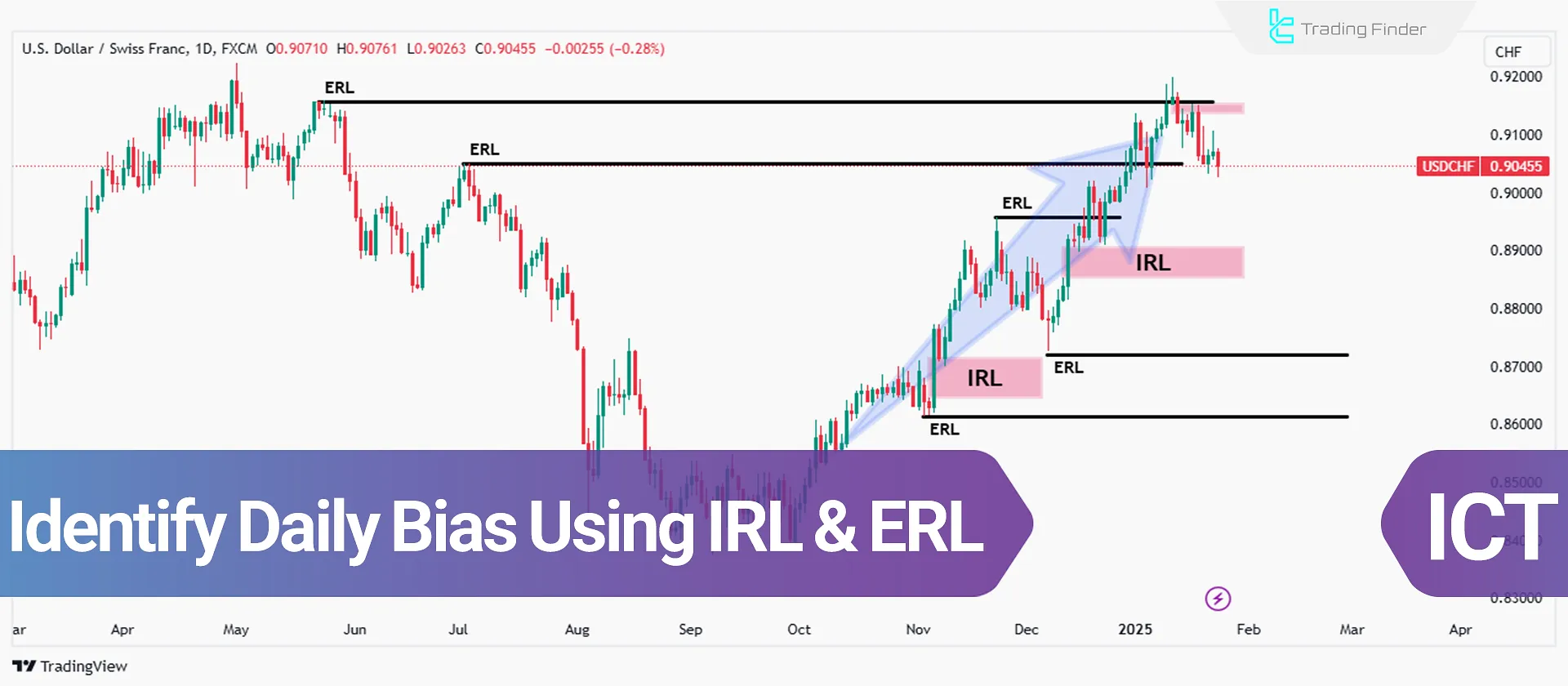
What is Daily Bias?
Daily Bias refers to predicting the predominant price direction throughout a trading day.
The concept begins by analyzing higher timeframes, such as weekly and daily, and then drills down into lower timeframes using internal and external liquidity principles.
Identifying Daily Bias with Internal and External Liquidity enhances traders’ win rates.
How to Identify Daily Bias
Follow the steps below to identify Daily Bias:
#1 Analyzing Higher Timeframes
To identify daily bias with IRL and ERL, start by examining the weekly and daily timeframes.
In this phase, old highs and old lows should be marked as external range liquidity (ERL). These levels indicate areas that the market tends to move towards.
Additionally, Fair Value Gaps (FVGs) within these timeframes should be identified, as they act as internal range liquidity (IRL), attracting price movement.
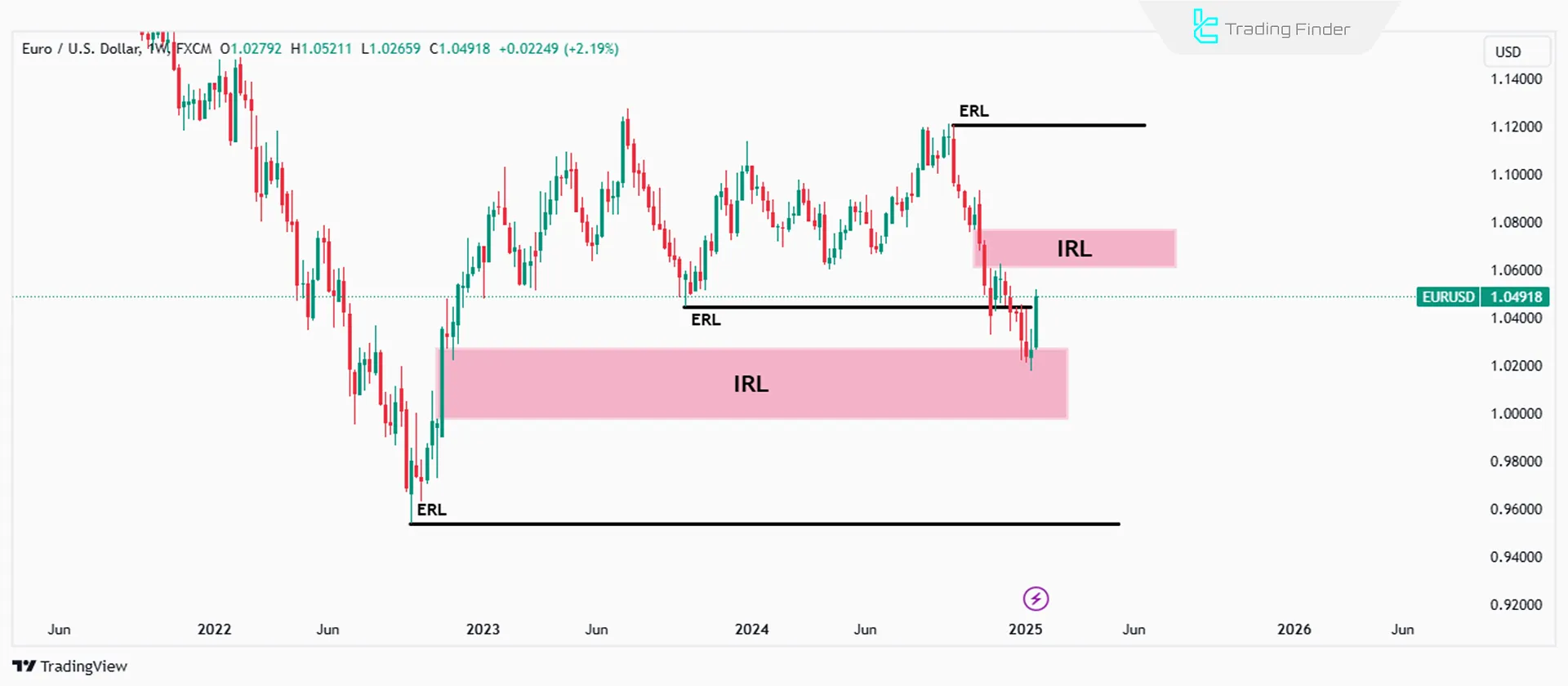
#2 Identifying the Market’s Dominant Trend
The overall market trend should be determined once key levels like support and resistance are identified on higher timeframes.
The trend can be bullish, bearish, or neutral. This analysis considers displacement moves (signaling liquidity grabs) and market structure shifts (MSS).
The trend is bullish if the market continuously breaks previous highs and forms new ones. Conversely, breaking previous lows consistently indicates a bearish trend.
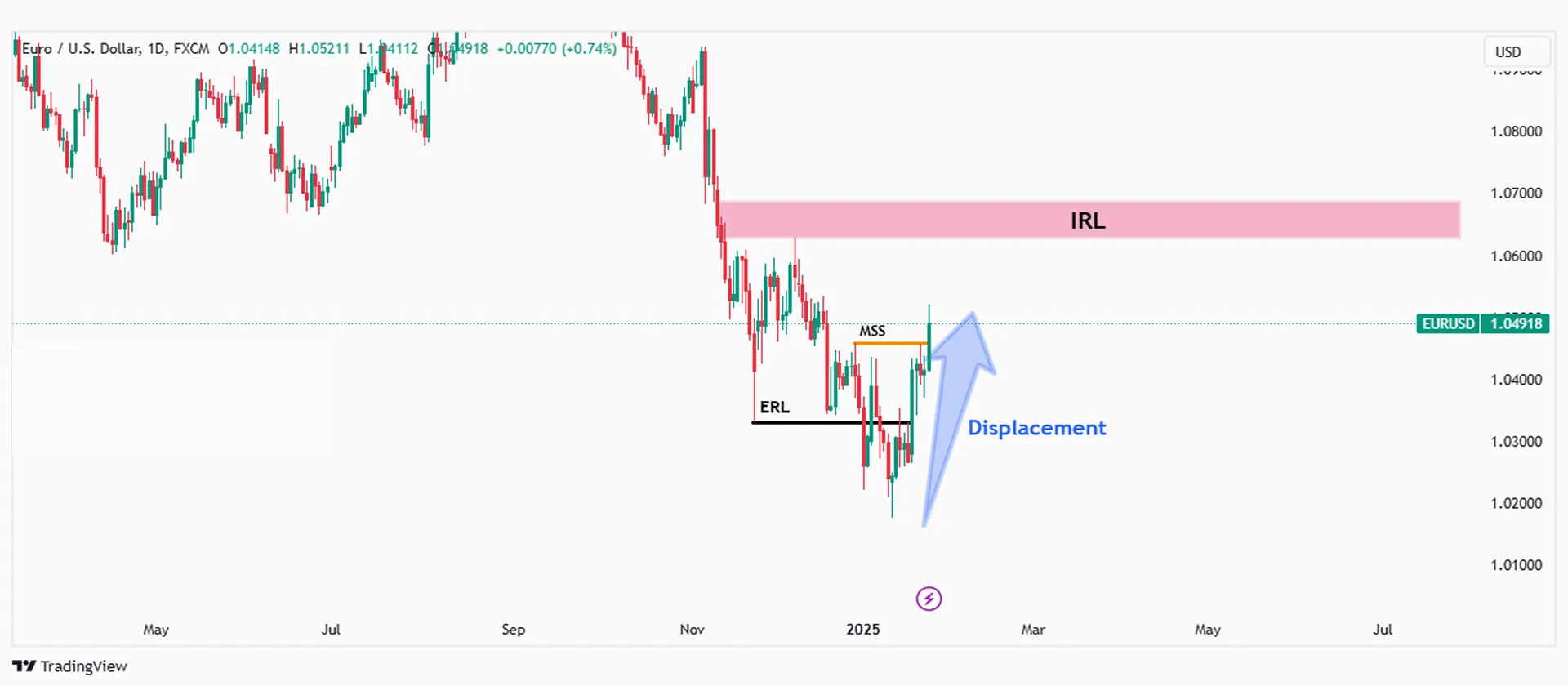
#3 Identifying Internal and External Liquidity
To identify daily bias with IRL and ERL, focus on areas likely to attract price movement.
Internal liquidity (IRL) is often found within Fair Value Gaps (FVGs) and imbalance zones. These areas indicate points where the market tends to fill gaps.
On the other hand, external liquidity (ERL) corresponds to old highs and lows, which attract price movement due to the accumulation of stop orders.
To recognize these areas, examine long-term and mid-term highs and lows.
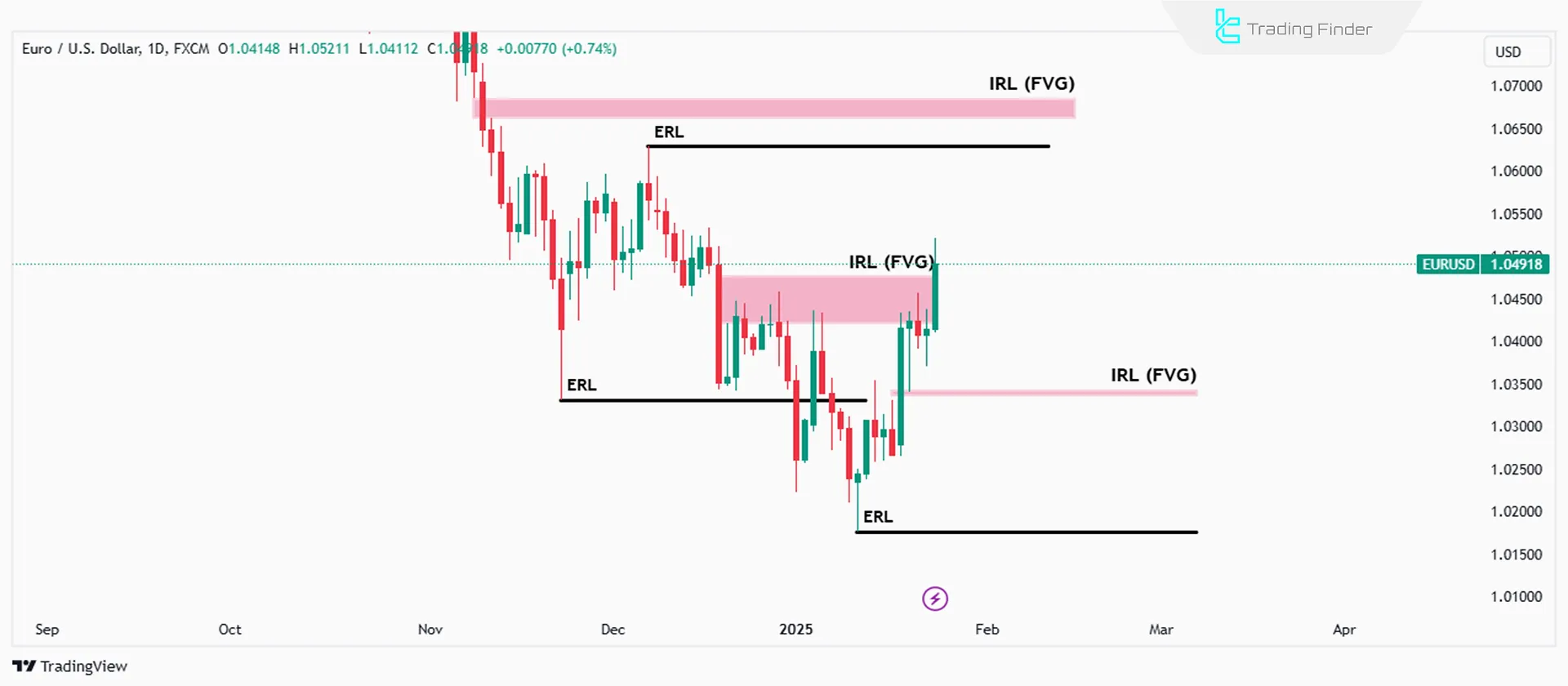
#4 Analyzing Recent Price Action
After determining key areas, recent price action should be reviewed in the daily timeframe.
If the price has recently collected external liquidity (ERL), its next target is typically an internal liquidity (IRL) zone.
Conversely, if the market moves away from an FVG, it is likely to head towards previous highs or lows.
#5 Confirming Bias Using Lower Timeframes
Once daily bias is identified using IRL and ERL, lower timeframes (such as 1-hour and 4-hour) should be analyzed.
Look for signs like market structure shifts (MSS) or displacement moves in the direction of the daily bias. These confirmations enable traders to enter trades with higher confidence.
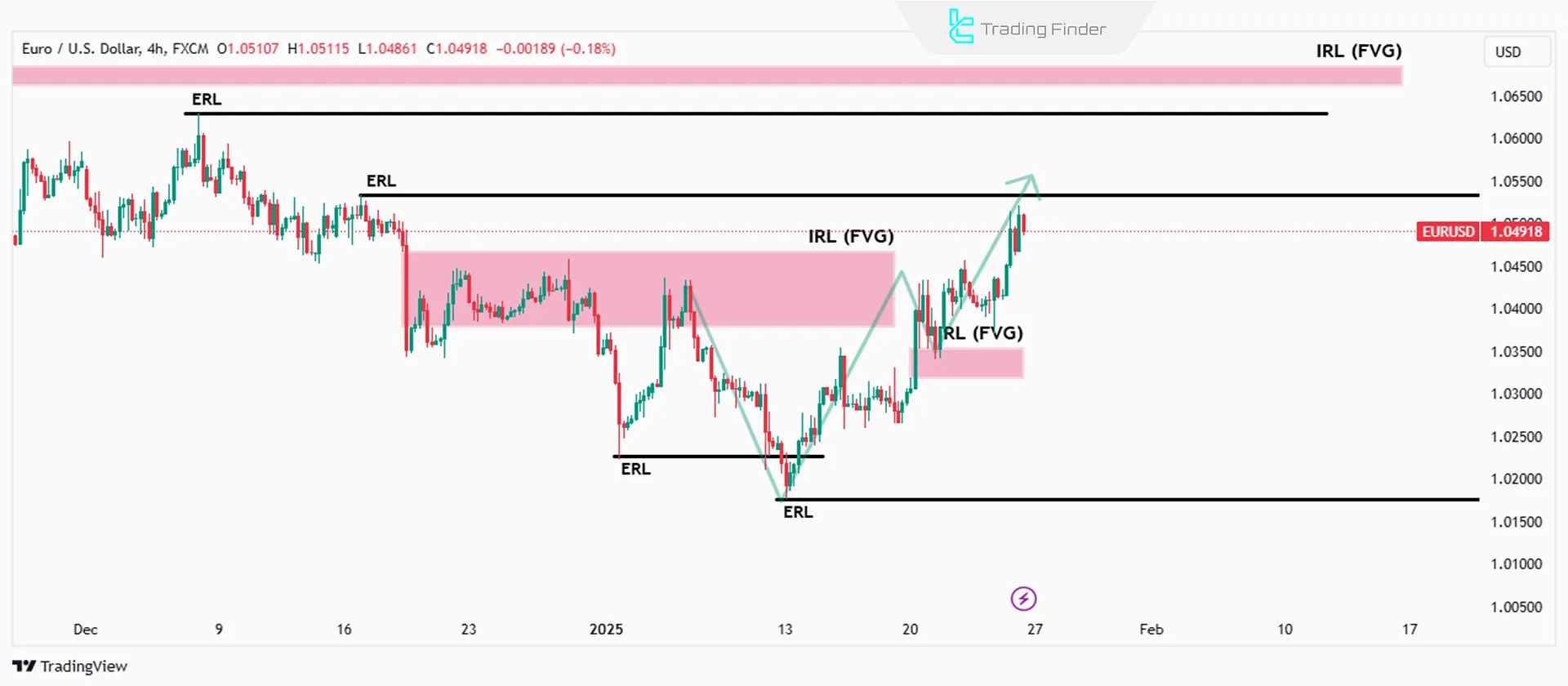
Key Points in Identifying Daily Bias with Internal and External Liquidity
To accurately use the concepts of identifying Daily Bias with IRL and ERL, pay attention to the following points:
- Internal liquidity (IRL) is typically observed as Fair Value Gaps (FVGs);
- External liquidity (ERL) consists of old highs and lows where significant order accumulation occurs;
- Analyzing recent price action is crucial for better understanding future movements;
- Utilizing lower timeframes helps pinpoint precise entry and exit points.
Conclusion
Higher timeframes serve as the foundation for daily bias identification. Weekly and daily charts provide critical reference points for external liquidity grabs, while lower timeframes refine entry points.
Without this top-down Analysis, traders risk misinterpreting short-term fluctuations.





